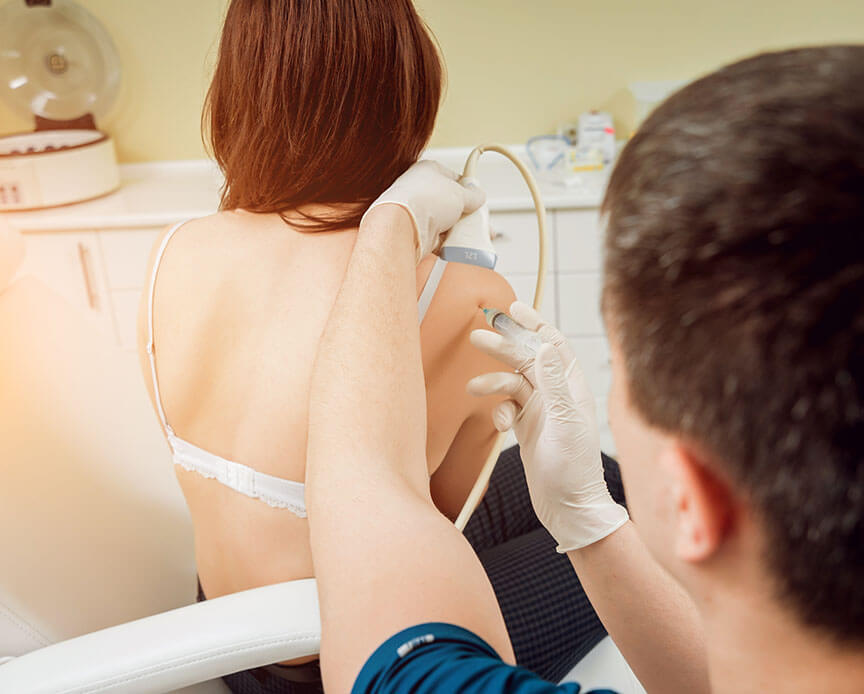SHOULDER
Ultrasound can dynamically assess the structures underneath the shoulder joint.When the bursa becomes enlarged or swollen it can cause impingement and pain with shoulder movements. It can beespecially painful when performing activities at shoulder or head height.
Calcium deposits in the tendons can lead to pain and restriction of movement. The appearance of the calcification on ultrasound can predict their symptoms and guide the use of injection therapy.
Shoulder pain that refers to the from of the shoulder may be caused by the Biceps tendon. Biceps pathology can be seen, such as fluid and inflammation of the sheath, subluxing or dislocated biceps, biceps tears and osteophytes in the biceps groove.
Tears can be seen with ultrasound and they can be catergorised by their location, size and the health of the surrounding tissue to decide whether surgical or conservative managemnet is required.
Partial tears can also been identified , although the accuracy is lower than for complete tears. Idenifying partical tears is helpful in planning your rehabilitation and pain management.
This condition can easily be seen on the upper surface which is superficial. Osteophytes of arthritis can also be easily seen. Swelling of the joint and capsular thickening can be seen, both signs of inflammation. Osteolysis of the lateral clavicle can be diagnosed.

